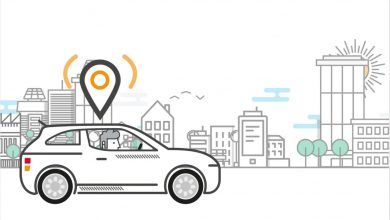The future of transportation will be all about connectivity, safety, efficiency…

Telematics Wire in discussion with Randeep Singh Khokar, explores how the automotive industry is expected to evolve in the coming years. Here are the excerpts of the discussion:
How do you see the year ahead 2022 in terms of growth of vehicle telematics?
The telematics market is expected to register a CAGR of 20.7% from 2021 to 2026. Telematics will offer one of the biggest opportunities to cut inefficiencies and hence, the cost of operation. This will benefit the whole transport industry and the entire economy by bringing down the logistics costs. The logistics costs in India are still high. Going forward Telematics will play a very important role in shaping the future of the Indian trucking and logistics industry. Perhaps telematics management system is one of the most crucial innovations that help commercial vehicles improve utilisation and hence TCO of their fleet. The data available through the telematics system helps improve the efficiency of the driver, ensures the safety of the truck and the driver, and also helps enhance the vehicle’s life by monitoring vehicle health and hence timely maintenance.
The Indian government has announced its vision to make the whole nation free from toll plazas by 2023 and this is also likely to boost the telematics industry in India. On the commercial vehicle front, Tata Motors has been the pioneer in introducing company-fitted connected vehicle solutions in the Indian domestic market and with the recently launched Fleet Edge, has further enhanced the connected mobility experience. On the passenger vehicle and electric vehicle front also, Tata Motors has launched iRA/Zconnect connectivity applications comprising important features related to Safety/Security/Comfort/Covenience. Tata Motors is further gearing up for the deployment of the next level of fleet telematics technology with advanced trip/journey management features that would cater to complex requirements across sectors.
Do you see the govt push for semiconductor manufacturing in India benefiting the automotive industry here?
The usage of semiconductors in the auto industry has gone up globally in recent times with technological advancements and new models coming with more and more electronic features such as Bluetooth connectivity and driver-assist, navigation, and hybrid-electric systems, besides the powertrain control unit. We do see government support towards enhancing and supporting the auto industry to overcome semiconductor challenges. The government has even lined up attractive incentive support for companies engaged in silicon semiconductor fabs, display fabs, compound semiconductors, silicon photonics, sensors fabs, semiconductor packaging, and semiconductor design. The semiconductor consumption in India is growing at the rate of 15 percent and with the Government’s package of Rs 76,000 crore, India is all set to become self-reliant and help in reducing imports in the future. As per an estimate, the domestic electronics industry has the potential of unlocking $1 trillion in GDP and parallelly generating millions of jobs.
What is the future of transportation?
The Indian auto industry is adhering to comparable global norms of emission after the transition to BS6. The future of transportation will be all about functionality, productivity, comfort, performance, and connectivity. Safety, fuel efficiency and connectivity are likely to be the growth drivers for the automobile industry in India. Manufacturing robust vehicles contribute immensely towards building a strong nation. The Indian car buyer is also increasingly paying keen attention to the importance of safety in their cars and is slowly drifting towards products, which provide them a holistic package as they are now looking for cars that provide an unprecedented mix of safety, practicality, and entertainment. Last year, the Ministry of Road Transport and Highways emphasized that by the year 2022 most of the vehicle safety will be at par with global standards and some safety features may even surpass International standards. At Tata Motors, we are also constantly undertaking R&D work on advanced driver assistance systems (ADAS) as well as full vehicle autonomy to be future-ready. The next decade will be a watershed period for the Indian automobile industry, with respect to critical and futuristic aspects such as electrification, safety, emissions, connected mobility, etc.
Published in Telematics Wire





